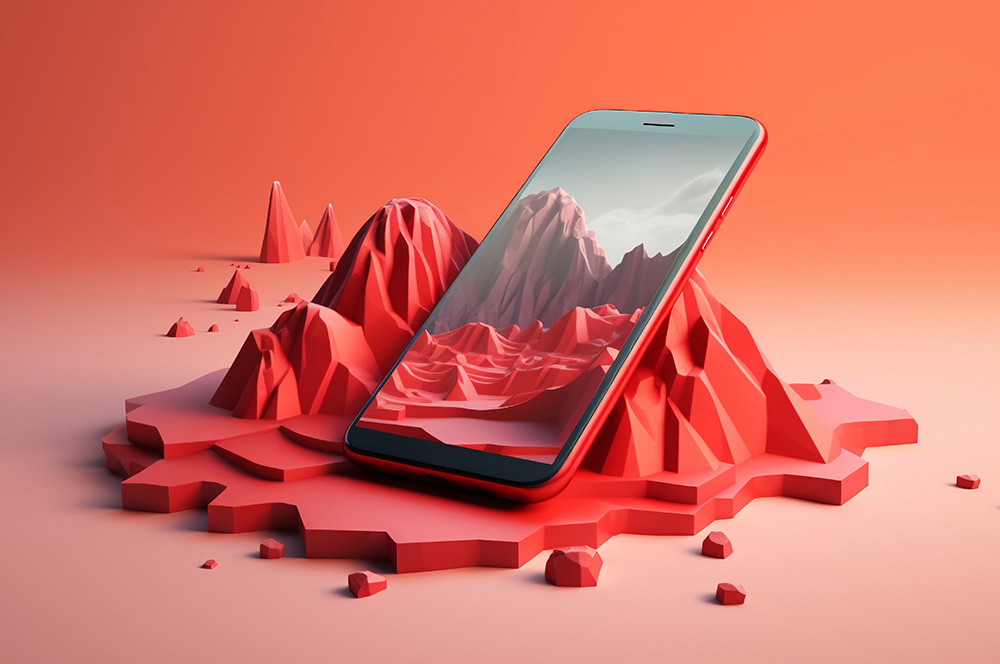
The Impact of Mobile Design on Graphic Design Trends
In today’s digital landscape, where smartphones have become ubiquitous extensions of our lives, the impact of mobile design on graphic design trends cannot be overstated. The rise of mobile devices has revolutionized how we consume content, interact with brands, and engage with the world around us. As such, graphic designers must continually adapt their practices to meet the evolving demands of this mobile-first era.
The Evolution of Mobile Design
Mobile design has come a long way since the early days of clunky interfaces and limited functionality. With advancements in technology and user experience (UX) design, mobile devices have become sleek. Intuitive platforms that seamlessly integrate into our daily routines. From responsive web design to mobile app interfaces, designers are tasked with creating experiences that are not only visually appealing. But also functional and user-friendly across various screen sizes and devices.
Shaping Graphic Design Trends
The Impact of Mobile Design on Graphic Design Trends is evident in several key areas:
- Minimalism and Simplicity: The limited screen real estate of mobile devices has fueled the rise of minimalist design principles. Clean layouts, ample white space, and simplified navigation are hallmarks of mobile design that have spilled over into other design mediums. Graphic designers are embracing simplicity to ensure that their content remains accessible and engaging on smaller screens.
- Bold Typography and Visual Hierarchy: With users increasingly accessing content on the go, typography plays a crucial role in capturing attention and conveying information quickly. Bold, expressive fonts and strategic use of visual hierarchy are common tactics employed in mobile design to guide users’ focus and improve readability. Graphic designers are leveraging these techniques to create impactful designs that resonate with mobile audiences.
- Interactive and Immersive Experiences: Mobile devices offer unique opportunities for interactive and immersive experiences through features like touch gestures, animations, and augmented reality. Graphic designers are exploring innovative ways to leverage these capabilities to create engaging digital experiences that captivate users and drive interaction. From swipeable galleries to interactive infographics, mobile design trends are pushing the boundaries of traditional graphic design practices.
- Content First Approach: In the era of mobile browsing, content is king. Graphic designers are prioritizing content clarity and accessibility. Ensuring that information is presented in a concise and digestible manner. This content-first approach not only enhances the user experience on mobile devices but also informs design decisions across other platforms. Fostering a more user-centric design ethos.
Adapting to the Mobile-First Mindset
As mobile design continues to shape graphic design trends. Designers must embrace a mobile-first mindset to stay relevant in an increasingly digital world. Here are some strategies for navigating this shift:
- Stay Informed: Keep abreast of the latest trends and best practices in mobile design through industry publications, online resources, and networking with fellow designers.
- Experiment and Innovate: Don’t be afraid to experiment with new techniques and technologies in your design projects. Embrace innovation and push the boundaries of traditional design conventions to create compelling mobile experiences.
- User-Centric Design: Put the needs and preferences of mobile users at the forefront of your design process. Conduct user research, gather feedback, and iterate on your designs to ensure that they meet the evolving expectations of mobile audiences.
- Collaborate Across Disciplines: Mobile design is inherently interdisciplinary, requiring collaboration between designers, developers, and other stakeholders. Foster open communication and collaboration across disciplines to create cohesive and impactful mobile experiences.


